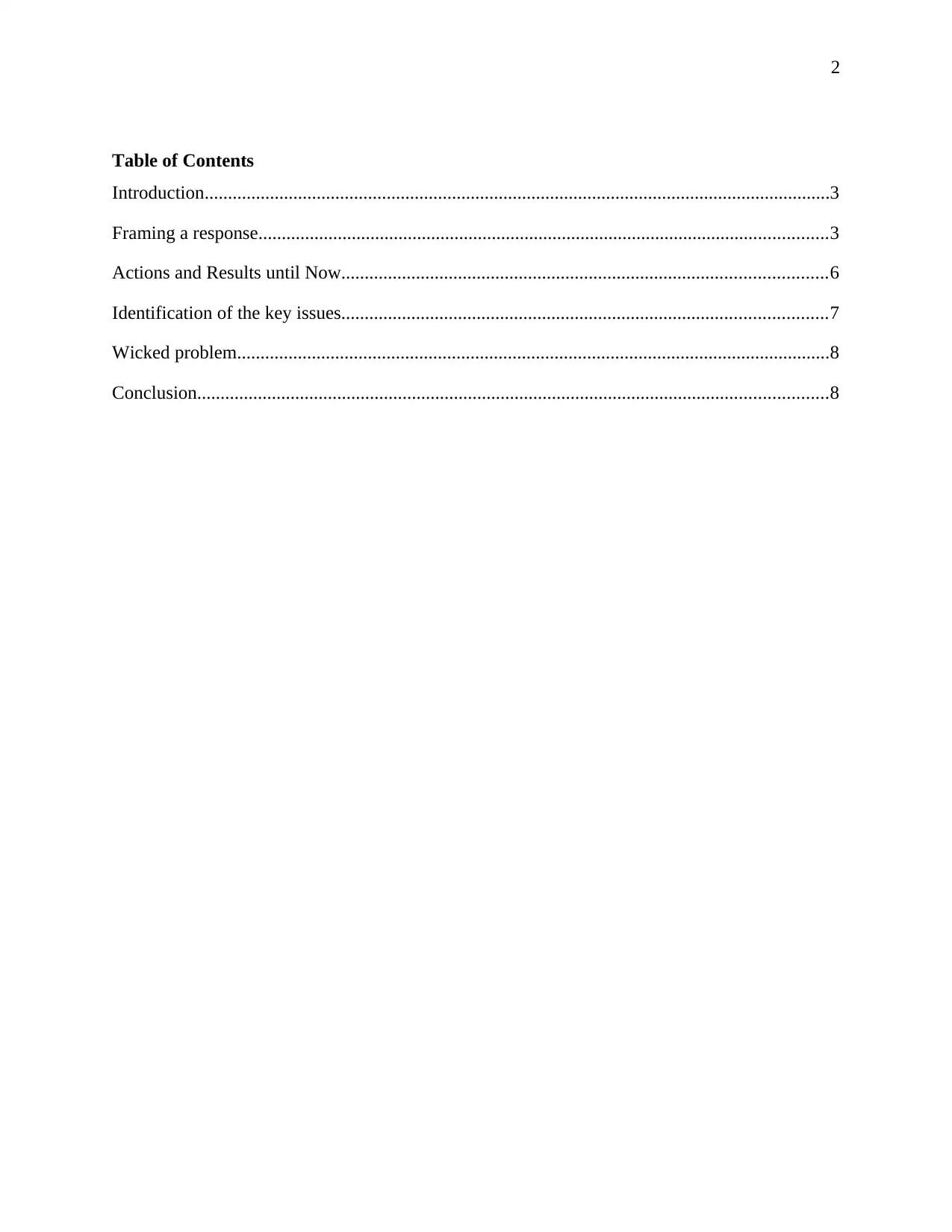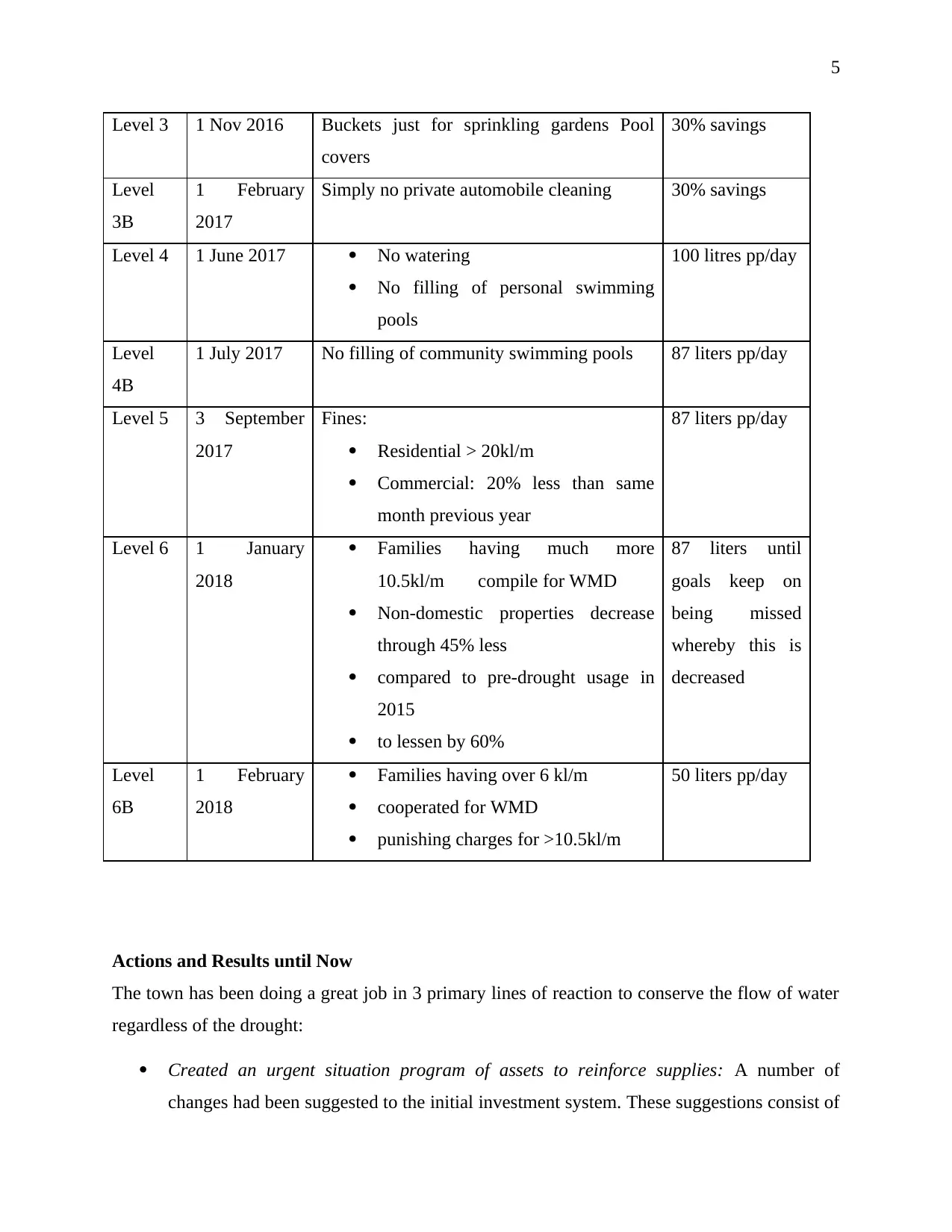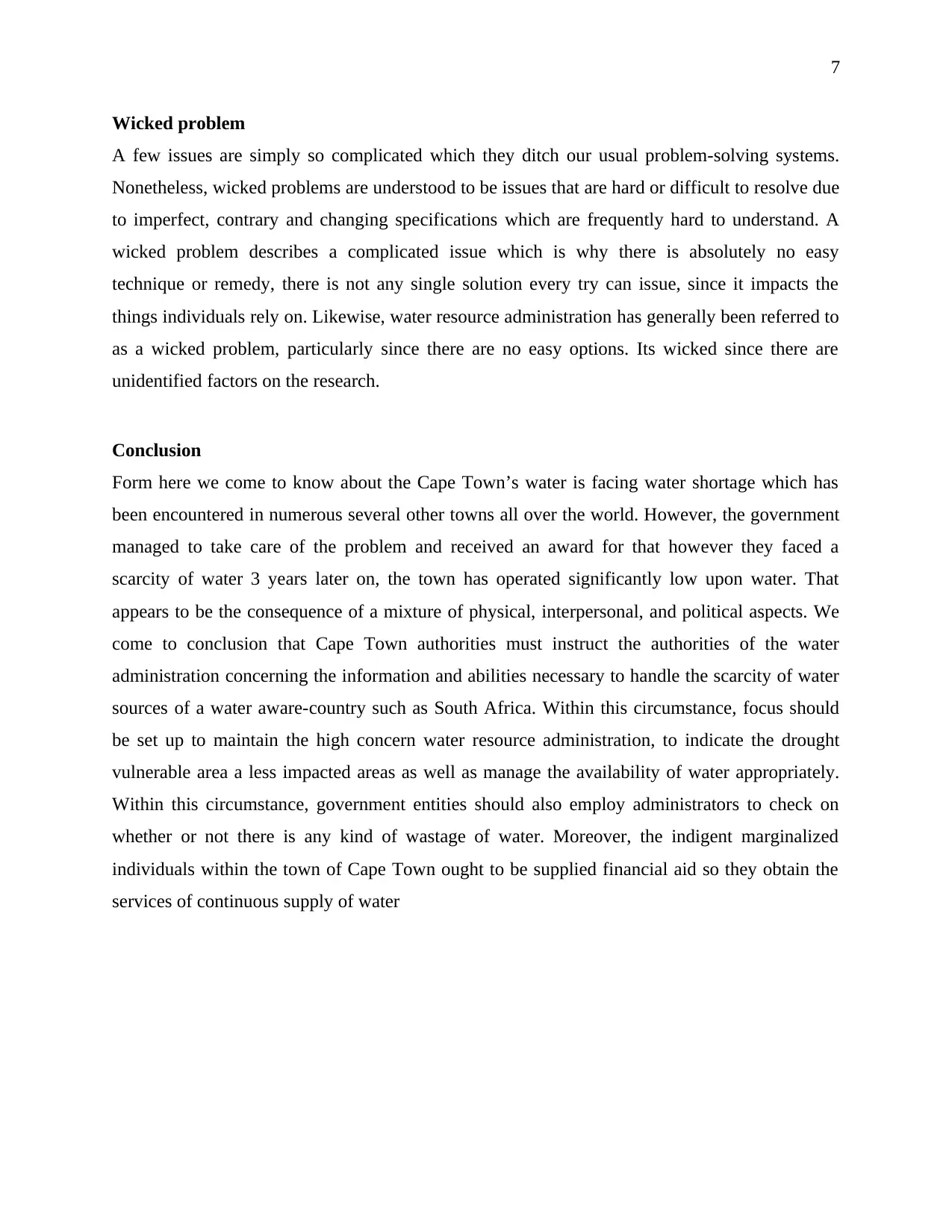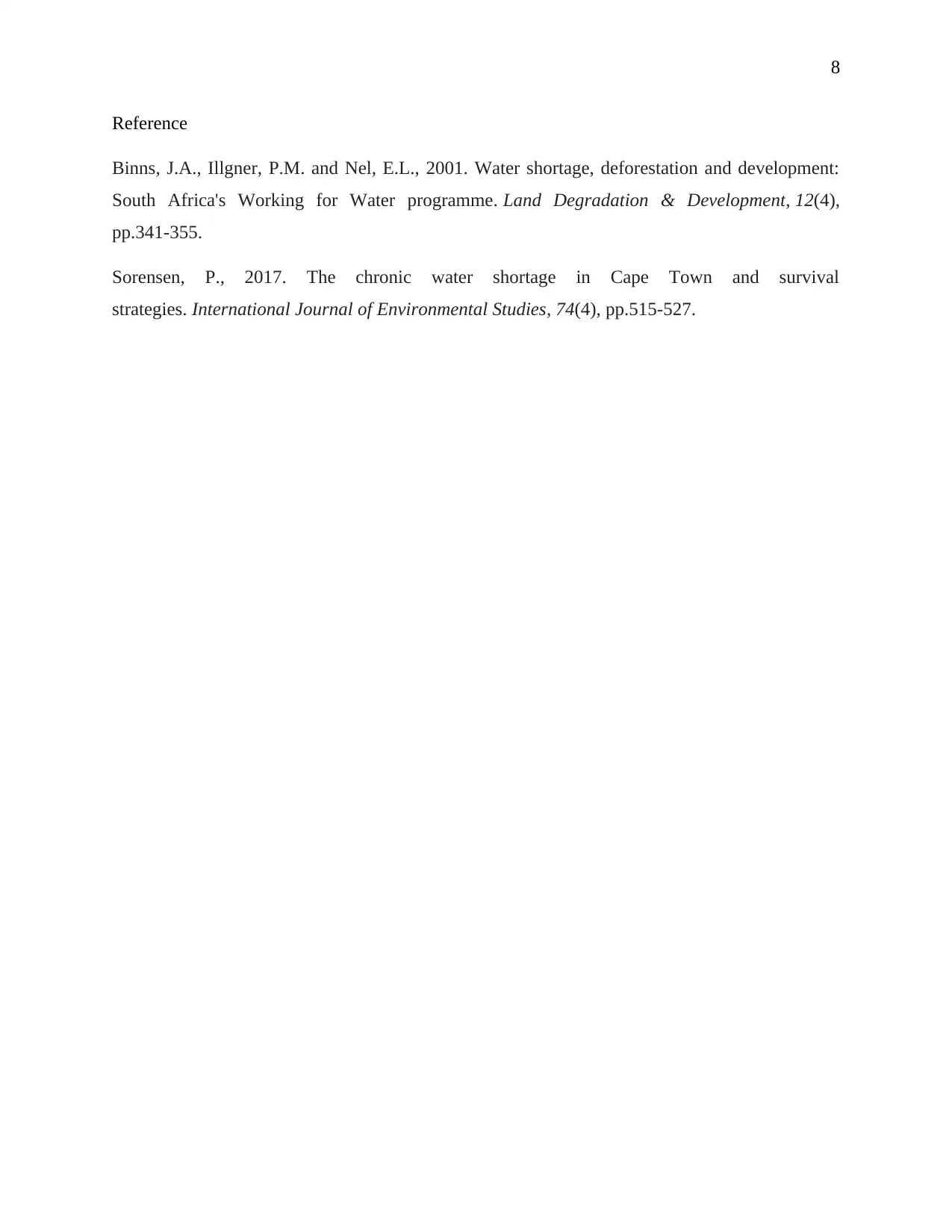Environmental Engineering Report: Cape Town Water Crisis Analysis
VerifiedAdded on 2023/04/17
|8
|1574
|394
Report
AI Summary
This report examines the Cape Town water crisis, a significant environmental challenge faced by the city. The introduction highlights the initial warnings of water scarcity and the city's subsequent actions, including water conservation measures and the implementation of various restriction levels. The report delves into the physical, social, and political factors that contributed to the crisis, including the Mediterranean climate, drought conditions, and governmental policies. It analyzes the actions and results of the city's response, such as the development of emergency programs, aggressive demand management, and collaborations with other water users. The report identifies key issues, including the role of water legislation, political factors, and the classification of the problem as a 'wicked problem' due to its complexity and lack of easy solutions. The conclusion emphasizes the need for effective water resource management, including educating authorities, prioritizing water resource management, and providing financial aid to marginalized communities. The report references key sources, providing a comprehensive overview of the Cape Town water crisis and its implications.

1
Cape Town Water Policy
Cape Town Water Policy
Paraphrase This Document
Need a fresh take? Get an instant paraphrase of this document with our AI Paraphraser

2
Table of Contents
Introduction......................................................................................................................................3
Framing a response..........................................................................................................................3
Actions and Results until Now........................................................................................................6
Identification of the key issues........................................................................................................7
Wicked problem...............................................................................................................................8
Conclusion.......................................................................................................................................8
Table of Contents
Introduction......................................................................................................................................3
Framing a response..........................................................................................................................3
Actions and Results until Now........................................................................................................6
Identification of the key issues........................................................................................................7
Wicked problem...............................................................................................................................8
Conclusion.......................................................................................................................................8

3
Introduction
The Cape Town’s water scarcity is within line in what has been encountered in numerous several
other towns all over the world. Following the Department of Water and Sanitation (SAWS)
released a caution regarding possible shortages for the town’s water supply within 2007, the
town served rapidly to diminish its water usage to be able to fulfill the SAWS’s 2015-16
preserving water goal. Cape Town’s water administration had verified very effective also it had
been granted a prize through the C40 in 2015 because of its administration involving water (C40
Cities Climate Leadership Group, nd.). Three years later, the town has operated significantly low
upon water. That appears to be the consequence of a mixture of physical, interpersonal, and
political aspects. The original and later alerts are not completely valued, especially due to the
fact every one of Cape Town’s six main dams had been completely packed at the end of the 2014
wet period. Nevertheless, the next three-year time period through 2015-2017, all had been
drought through many years of raising seriousness. Storage of Water had decreased quickly and
kept the 4 million inhabitants of Cape Town having dams in following 25% of capability in
January 2018
Framing a response
Droughts are not unusual within Cape Town, that experienced a Mediterranean environment
which showcased brief, wet winter seasons and lengthy, dried out summer months. The one
which started in 2015 used others Cape Town’s water shortage is within line in what has been
encountered in numerous different cities all over the world. Following the Department of Water
and Sanitation (SAWS) released a caution regarding possible scarcity regarding the city’s water
providence in 2007, the town served rapidly to reduce its water usage to be able to fulfill the
SAWS’s 2015-16 water saving goal (Morabito, 2018). Cape Town’s waters administration had
verified very effective also it was granted a prize through the C40 in 2015 because of its
administration of water (C40 Cities Climate Leadership Group, nd.). Several years later, the city
significantly run out of water. In 2015, issues had been elevated while it had been noticed that
levels of water in dam had been significantly decreased after substandard winter rainwater in
2014/15. Even though city council originally mentioned there had been ‘no concern’ on the
city’s water , the city taken care of immediately the newest drought by progressively tightening
Introduction
The Cape Town’s water scarcity is within line in what has been encountered in numerous several
other towns all over the world. Following the Department of Water and Sanitation (SAWS)
released a caution regarding possible shortages for the town’s water supply within 2007, the
town served rapidly to diminish its water usage to be able to fulfill the SAWS’s 2015-16
preserving water goal. Cape Town’s water administration had verified very effective also it had
been granted a prize through the C40 in 2015 because of its administration involving water (C40
Cities Climate Leadership Group, nd.). Three years later, the town has operated significantly low
upon water. That appears to be the consequence of a mixture of physical, interpersonal, and
political aspects. The original and later alerts are not completely valued, especially due to the
fact every one of Cape Town’s six main dams had been completely packed at the end of the 2014
wet period. Nevertheless, the next three-year time period through 2015-2017, all had been
drought through many years of raising seriousness. Storage of Water had decreased quickly and
kept the 4 million inhabitants of Cape Town having dams in following 25% of capability in
January 2018
Framing a response
Droughts are not unusual within Cape Town, that experienced a Mediterranean environment
which showcased brief, wet winter seasons and lengthy, dried out summer months. The one
which started in 2015 used others Cape Town’s water shortage is within line in what has been
encountered in numerous different cities all over the world. Following the Department of Water
and Sanitation (SAWS) released a caution regarding possible scarcity regarding the city’s water
providence in 2007, the town served rapidly to reduce its water usage to be able to fulfill the
SAWS’s 2015-16 water saving goal (Morabito, 2018). Cape Town’s waters administration had
verified very effective also it was granted a prize through the C40 in 2015 because of its
administration of water (C40 Cities Climate Leadership Group, nd.). Several years later, the city
significantly run out of water. In 2015, issues had been elevated while it had been noticed that
levels of water in dam had been significantly decreased after substandard winter rainwater in
2014/15. Even though city council originally mentioned there had been ‘no concern’ on the
city’s water , the city taken care of immediately the newest drought by progressively tightening
⊘ This is a preview!⊘
Do you want full access?
Subscribe today to unlock all pages.

Trusted by 1+ million students worldwide

4
up water limitations, increasing these to level 2 on January 1, 2016, through level 1, that have
been in position constantly since the finish of the previous drought in 2005. Cultivation,
nevertheless, was exempted through the limitations .The 20% preserving of water amongst home
and business consumers had been offered however a regular basic allocation of 6 kL free water
would still be given to poorer families, even though punitive steps had been released for severe
offenders of the limitations (Sorensen, 2017).
The ‘Day Zero plan’ might be the point in which a Disaster Risk Management Centre presents
stage 2 of their strategy, to become activated once the city’s six main dams providing Cape
Town achieve a storage of 13.5% water. Furthermore, in late the harvest season, deciduous
fruits farmers through Elgin-Grabouw valley contributed excess water for the city through the
Groenland Water Users Association (GWUA) personal dams. Due to this replenishment in the
city’s reducing water source, along with good conformity by Capetonians to diminish their water
usage based on water limitation rules, ‘Day Zero’ might be delayed forever .
Figure 1: Restriction levels and timeline, July 2013-2018
Figure 1: Restriction levels and timeline, July 2013-2018
Level Data Restriction Target
Level 1 2005 Absolutely no irrigation 10:00-16:00
Apply nozzles in hosepipes
Absolutely no hosing along hard
areas
No watering of constructing sand
10% savings
Level 2 1 Jan 2016 Irrigation regarding 1 hour on Wed,
Thurs
. No sprinkling of water 9:00-16:00
20% savings
up water limitations, increasing these to level 2 on January 1, 2016, through level 1, that have
been in position constantly since the finish of the previous drought in 2005. Cultivation,
nevertheless, was exempted through the limitations .The 20% preserving of water amongst home
and business consumers had been offered however a regular basic allocation of 6 kL free water
would still be given to poorer families, even though punitive steps had been released for severe
offenders of the limitations (Sorensen, 2017).
The ‘Day Zero plan’ might be the point in which a Disaster Risk Management Centre presents
stage 2 of their strategy, to become activated once the city’s six main dams providing Cape
Town achieve a storage of 13.5% water. Furthermore, in late the harvest season, deciduous
fruits farmers through Elgin-Grabouw valley contributed excess water for the city through the
Groenland Water Users Association (GWUA) personal dams. Due to this replenishment in the
city’s reducing water source, along with good conformity by Capetonians to diminish their water
usage based on water limitation rules, ‘Day Zero’ might be delayed forever .
Figure 1: Restriction levels and timeline, July 2013-2018
Figure 1: Restriction levels and timeline, July 2013-2018
Level Data Restriction Target
Level 1 2005 Absolutely no irrigation 10:00-16:00
Apply nozzles in hosepipes
Absolutely no hosing along hard
areas
No watering of constructing sand
10% savings
Level 2 1 Jan 2016 Irrigation regarding 1 hour on Wed,
Thurs
. No sprinkling of water 9:00-16:00
20% savings
Paraphrase This Document
Need a fresh take? Get an instant paraphrase of this document with our AI Paraphraser

5
Level 3 1 Nov 2016 Buckets just for sprinkling gardens Pool
covers
30% savings
Level
3B
1 February
2017
Simply no private automobile cleaning 30% savings
Level 4 1 June 2017 No watering
No filling of personal swimming
pools
100 litres pp/day
Level
4B
1 July 2017 No filling of community swimming pools 87 liters pp/day
Level 5 3 September
2017
Fines:
Residential > 20kl/m
Commercial: 20% less than same
month previous year
87 liters pp/day
Level 6 1 January
2018
Families having much more
10.5kl/m compile for WMD
Non-domestic properties decrease
through 45% less
compared to pre-drought usage in
2015
to lessen by 60%
87 liters until
goals keep on
being missed
whereby this is
decreased
Level
6B
1 February
2018
Families having over 6 kl/m
cooperated for WMD
punishing charges for >10.5kl/m
50 liters pp/day
Actions and Results until Now
The town has been doing a great job in 3 primary lines of reaction to conserve the flow of water
regardless of the drought:
Created an urgent situation program of assets to reinforce supplies: A number of
changes had been suggested to the initial investment system. These suggestions consist of
Level 3 1 Nov 2016 Buckets just for sprinkling gardens Pool
covers
30% savings
Level
3B
1 February
2017
Simply no private automobile cleaning 30% savings
Level 4 1 June 2017 No watering
No filling of personal swimming
pools
100 litres pp/day
Level
4B
1 July 2017 No filling of community swimming pools 87 liters pp/day
Level 5 3 September
2017
Fines:
Residential > 20kl/m
Commercial: 20% less than same
month previous year
87 liters pp/day
Level 6 1 January
2018
Families having much more
10.5kl/m compile for WMD
Non-domestic properties decrease
through 45% less
compared to pre-drought usage in
2015
to lessen by 60%
87 liters until
goals keep on
being missed
whereby this is
decreased
Level
6B
1 February
2018
Families having over 6 kl/m
cooperated for WMD
punishing charges for >10.5kl/m
50 liters pp/day
Actions and Results until Now
The town has been doing a great job in 3 primary lines of reaction to conserve the flow of water
regardless of the drought:
Created an urgent situation program of assets to reinforce supplies: A number of
changes had been suggested to the initial investment system. These suggestions consist of

6
to have the maximum concern to the progress groundwater resources, especially within
the low Cape Flats aquifer as well as reformulate the suggested strategy to create urgent
desalinization factories.
Released an aggressive need administration: It is often applied through the Water
Department offers all of the aspects of best-practices. Such as an extensive interaction
strategy, replacing meters with cut-off gadgets, pressure administration in the networking
and circulation reducers, presenting a hostile financial motivation to reduce usage.
Set up relationships along with other water customers in the area to improve the
accessibility for huge water supply.
Identification of the key issues
Because of the town’s water administration document and environmental plans, the present water
problems happen somewhat as a shock. Just a few years back, dams had been whole to the edge
and also the city had been granted an exclusive prize for their water administration achievements
in 2014.
According to Binns, Illgner, and Nel, (2001),broken political effects of water management
trigger in considering with the problem. The character of South African water legislation plays a
role in absence of cooperation problem. The South African Constitution developed individual
duties regarding water resource administration and water providers. The raw water infrastructure
(surface area and terrain water) may be the national government’s obligation, whilst water
assistance (water cure, supply, etc.) are local governments’ obligation. Generally there are very
different legal requires and first roles relevant to water facilities.
The cause of the problems which has crippled Cape Town locates their origins in repetitive
downfalls through the government to get ready for this liability. If water administration
demonstrated good at the regional and city, the origin of the issue appears to lay using the
nationwide government. A politics detach among authorities and also the administration in the
Western Cape . Cape Town, failed to restrict water use for farmers and provide 60% of the water
through the Western Cape's water supply program in 2015 and under estimated the factor of the
issue, convinced that the drought might be short-term.
to have the maximum concern to the progress groundwater resources, especially within
the low Cape Flats aquifer as well as reformulate the suggested strategy to create urgent
desalinization factories.
Released an aggressive need administration: It is often applied through the Water
Department offers all of the aspects of best-practices. Such as an extensive interaction
strategy, replacing meters with cut-off gadgets, pressure administration in the networking
and circulation reducers, presenting a hostile financial motivation to reduce usage.
Set up relationships along with other water customers in the area to improve the
accessibility for huge water supply.
Identification of the key issues
Because of the town’s water administration document and environmental plans, the present water
problems happen somewhat as a shock. Just a few years back, dams had been whole to the edge
and also the city had been granted an exclusive prize for their water administration achievements
in 2014.
According to Binns, Illgner, and Nel, (2001),broken political effects of water management
trigger in considering with the problem. The character of South African water legislation plays a
role in absence of cooperation problem. The South African Constitution developed individual
duties regarding water resource administration and water providers. The raw water infrastructure
(surface area and terrain water) may be the national government’s obligation, whilst water
assistance (water cure, supply, etc.) are local governments’ obligation. Generally there are very
different legal requires and first roles relevant to water facilities.
The cause of the problems which has crippled Cape Town locates their origins in repetitive
downfalls through the government to get ready for this liability. If water administration
demonstrated good at the regional and city, the origin of the issue appears to lay using the
nationwide government. A politics detach among authorities and also the administration in the
Western Cape . Cape Town, failed to restrict water use for farmers and provide 60% of the water
through the Western Cape's water supply program in 2015 and under estimated the factor of the
issue, convinced that the drought might be short-term.
⊘ This is a preview!⊘
Do you want full access?
Subscribe today to unlock all pages.

Trusted by 1+ million students worldwide

7
Wicked problem
A few issues are simply so complicated which they ditch our usual problem-solving systems.
Nonetheless, wicked problems are understood to be issues that are hard or difficult to resolve due
to imperfect, contrary and changing specifications which are frequently hard to understand. A
wicked problem describes a complicated issue which is why there is absolutely no easy
technique or remedy, there is not any single solution every try can issue, since it impacts the
things individuals rely on. Likewise, water resource administration has generally been referred to
as a wicked problem, particularly since there are no easy options. Its wicked since there are
unidentified factors on the research.
Conclusion
Form here we come to know about the Cape Town’s water is facing water shortage which has
been encountered in numerous several other towns all over the world. However, the government
managed to take care of the problem and received an award for that however they faced a
scarcity of water 3 years later on, the town has operated significantly low upon water. That
appears to be the consequence of a mixture of physical, interpersonal, and political aspects. We
come to conclusion that Cape Town authorities must instruct the authorities of the water
administration concerning the information and abilities necessary to handle the scarcity of water
sources of a water aware-country such as South Africa. Within this circumstance, focus should
be set up to maintain the high concern water resource administration, to indicate the drought
vulnerable area a less impacted areas as well as manage the availability of water appropriately.
Within this circumstance, government entities should also employ administrators to check on
whether or not there is any kind of wastage of water. Moreover, the indigent marginalized
individuals within the town of Cape Town ought to be supplied financial aid so they obtain the
services of continuous supply of water
Wicked problem
A few issues are simply so complicated which they ditch our usual problem-solving systems.
Nonetheless, wicked problems are understood to be issues that are hard or difficult to resolve due
to imperfect, contrary and changing specifications which are frequently hard to understand. A
wicked problem describes a complicated issue which is why there is absolutely no easy
technique or remedy, there is not any single solution every try can issue, since it impacts the
things individuals rely on. Likewise, water resource administration has generally been referred to
as a wicked problem, particularly since there are no easy options. Its wicked since there are
unidentified factors on the research.
Conclusion
Form here we come to know about the Cape Town’s water is facing water shortage which has
been encountered in numerous several other towns all over the world. However, the government
managed to take care of the problem and received an award for that however they faced a
scarcity of water 3 years later on, the town has operated significantly low upon water. That
appears to be the consequence of a mixture of physical, interpersonal, and political aspects. We
come to conclusion that Cape Town authorities must instruct the authorities of the water
administration concerning the information and abilities necessary to handle the scarcity of water
sources of a water aware-country such as South Africa. Within this circumstance, focus should
be set up to maintain the high concern water resource administration, to indicate the drought
vulnerable area a less impacted areas as well as manage the availability of water appropriately.
Within this circumstance, government entities should also employ administrators to check on
whether or not there is any kind of wastage of water. Moreover, the indigent marginalized
individuals within the town of Cape Town ought to be supplied financial aid so they obtain the
services of continuous supply of water
Paraphrase This Document
Need a fresh take? Get an instant paraphrase of this document with our AI Paraphraser

8
Reference
Binns, J.A., Illgner, P.M. and Nel, E.L., 2001. Water shortage, deforestation and development:
South Africa's Working for Water programme. Land Degradation & Development, 12(4),
pp.341-355.
Sorensen, P., 2017. The chronic water shortage in Cape Town and survival
strategies. International Journal of Environmental Studies, 74(4), pp.515-527.
Reference
Binns, J.A., Illgner, P.M. and Nel, E.L., 2001. Water shortage, deforestation and development:
South Africa's Working for Water programme. Land Degradation & Development, 12(4),
pp.341-355.
Sorensen, P., 2017. The chronic water shortage in Cape Town and survival
strategies. International Journal of Environmental Studies, 74(4), pp.515-527.
1 out of 8
Your All-in-One AI-Powered Toolkit for Academic Success.
+13062052269
info@desklib.com
Available 24*7 on WhatsApp / Email
![[object Object]](/_next/static/media/star-bottom.7253800d.svg)
Unlock your academic potential
Copyright © 2020–2025 A2Z Services. All Rights Reserved. Developed and managed by ZUCOL.